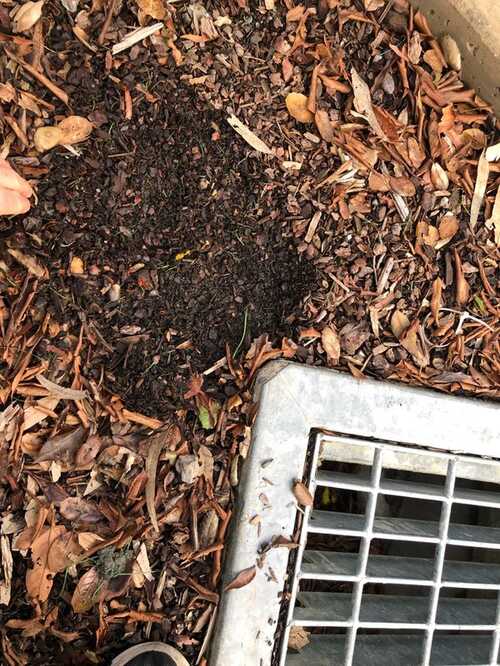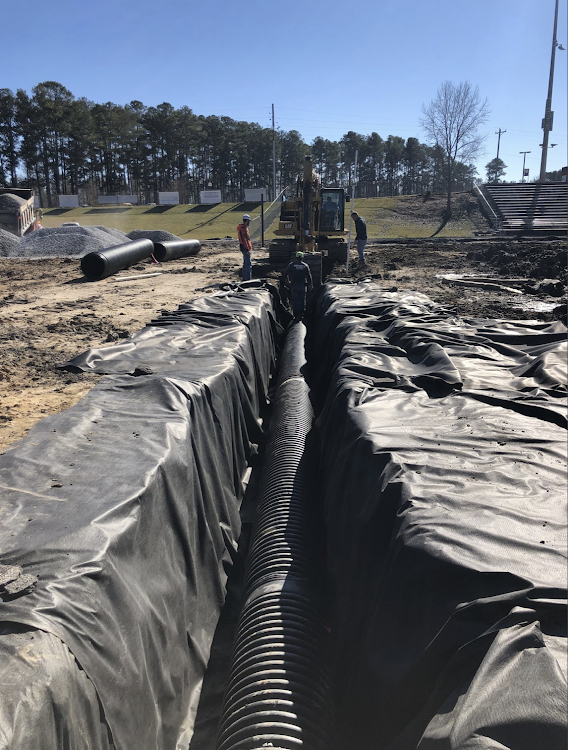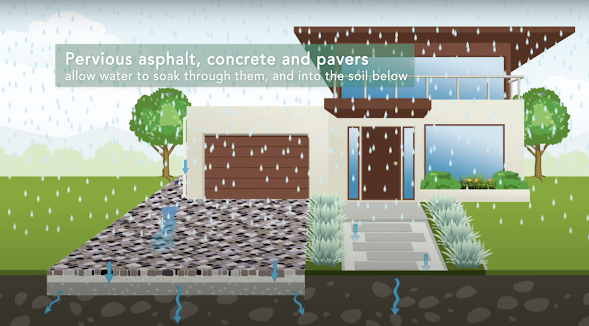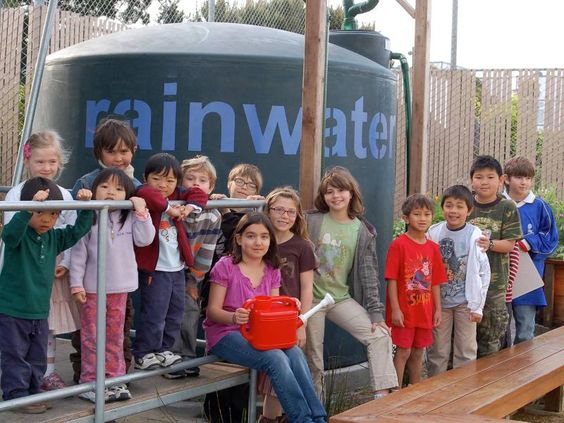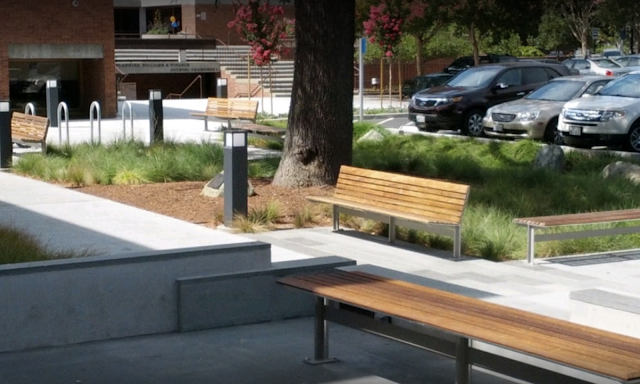LGUSD's artificial turf will *increase* stormwater runoff while the Town of Los Gatos actively campaigns for community to *decrease* it.
Want to conserve water? Don't send rain down the storm drain and away from Los Gatos. Keep it here. Use it! Recharge Los Gatos groundwater and raise the water table to help maintain reserves that can help us manage drought.
ONE of the many ecological issues with artificial turf is how it impacts our local stormwater runoff.
If instead of nurturing healthy soils to absorb rain like a sponge, LGUSD installs plastic grass, stormwater runoff will increase from LGUSD campuses into Los Gatos Creek and the San Francisco Bay.
Not only does plastic grass send away precious rainwater, that water drags pollutants into the watershed with it. These pollutants include:
- chemicals in the artificial turf system (PFAS possibly being one of them) as the plastic breaks down under heat and UV exposure.
- chemicals applied to plastic grass such as:
- solvents and cleaners (to remove baked on spills and animal droppings),
- anti-statics (to minimize infill sticking to field users), and
- anti-microbial treatments (to help keep the manmade surface hygienic).
- infill material and broken off plastic grass blades like the ones you see here around the drain at Creekside Sports Park in Los Gatos...
Plastic grass blades are mixed into the soil and mulch near the drain at Los Gatos's Creekside Park.
This polluted water does NOT get treated through the sewer system. The Los Gatos storm drain system and the sanitary sewer system are not the same thing. The storm drain system was designed with the intent to carry rainwater, without any treatmeant whatsoever, directly to Los Gatos Creek. As we continue to eliminate living landscapes in town, this rainwater runs off faster, and it picks up pollutants along the way.
As mentioned, stormwater that runs off LGUSD campuses discharges to Los Gatos Creek and South San Francisco Bay. Los Gatos shares a permit with 12 other local cities/towns to discharge into the bay.
Together Los Gatos and these other cities/towns work to raise awareness about preventing stormwater pollution and protecting watersheds.
They illustrate what green stormwater features look like in the 5-min video below as part of their current campaign.
The video starts by explaining streets, parking lots, driveways, sidewalks, and rooftops contribute to water pollution, because rainwater runs off these ground and roof surfaces through drainage pipes into storm drains instead of soaking into the soil.
Artificial turf falls into this category of ground surfacing; Rainwater runs through artificial turf into storm drains. In fact, the artificial turf drainage system is part of the enormous expense of installing an artificial turf system. There is no soil directly under the plastic carpet to act as a sponge. Peel back that perforated sheet of green plastic, and you will find a bed of crushed rock atop drainage trenches lined with pipe to carry away the water, in some cases with yet even more plastic sheeting beneath that...
As a reminder to water conservationists advocating for plastic grass, the water carried away here includes not just precious stormwater (the main subject of this post), but also the precious potable water LGUSD will be paying to spray on the plastic grass during the dry season to clean it and to cool it from the extreme temperatures the plastic reaches. While cleaning and cooling may not be part of the maintenance routine followed by homeowners that have replaced their natural grass lawns with plastic grass, these practices are necessary at school for the safety of the 1000+ students that will be actively recreating on these man-made carpets daily. Imagine putting rugs outdoors for children to play on and never cleaning them. Gross! Instead of watering a 2-acre field just to cool it for a mere 15 minutes and then sending that contaminated water directly into the Los Gatos Creek, we can wisely reserve water usage for more beneficial purposes by keeping artificial turf off our school campuses. Water conservationists, surely you agree it's a shame to not put potable water to better use, such as maintaining living landscapes that sequester carbon and clean and cool the air while providing equitable access to nature for students all while also enabling community soccer leagues. All stakeholders reap the benefits of natural grass athletic fields.
The video below takes you on a local tour of green stormwater features in use throughout the Santa Clara Valley. These features conserve rain water by keeping it on site, either enabling it to soak into the soil or by storing it in vessels that can be tapped for watering/irrigating plants later. These efforts reduce runoff. In doing so, they help protect our community from flooding, help prevent pollutants from entering Los Gatos Creek and San Francisco Bay, and enable soil to filter the water, lessening the resources needed to provide us with safe, clean drinking water.
To review, check out the many examples of things YOU could advocate LGUSD do to manage water responsibly.
- opt for low-water living landscapes in healthy soil:
- drought-tolerant natural grass athletic fields
- native plants
- bioretention areas (rain gardens)
- for areas that may need some hardscaping (outdoor classrooms, play spaces, pathways), choose permeable versions:
- porous asphalt (example: the pervious parking lot at Los Gatos Creekside Sports Park)
- pervious concrete
- permeable pavers
- integrate gravel, rocks, or greenery between paver stones or other hard surfaces
- harvest rainwater (cisterns and rain barrels)
Green stormwater features all double as highly relevant science/math/history instructional opportunities with which teachers can engage students.
They also offer students and community members first-hand, on-site lessons in environmental stewardship, ultimately benefitting the entire Los Gatos community, given that we are leaving these youth to manage the increasing burdens of climate change.
Instances of role modeling environmental stewardship for the community have an impact. The school district leads the community by example, just like the Town of Los Gatos does. Implore the district to take this responsibility seriously.
Have you seen the bioswale in front of the Los Gatos Library and the educational signage with it? It's an example of a bioretention area and an example of the town role modeling for the community.
The December 2021 approval by the school board to honor the principals' requests to move forward with plans to use plastic grass in outdoor classrooms was likely rationalized by leadership perceiving these areas/uses as being small and innocuous. But, they are not innocuous. Little things matter. 1000+ kids visit these spaces every schoolday for 6 years. They notice. In fact, they are better observers than many grownups. Again, LGUSD would benefit the entire community to practice the environmental stewardship it preaches by revising the outdoor classroom designs before going any further.
To recap, the Town of Los Gatos is actively campaigning for the community to reduce/decrease stormwater runoff. LGUSD will, with plastic grass in outdoor classrooms and plastic grass in play fields, instead increase stormwater runoff from its own property. It will also greenlight on-the-fence community members thus increasing stormwater runoff from Los Gatos residential landscapes as well.
Challenge LGUSD to capture and/or filter stormwater on site. Living landscapes (natural grass, native plants, etc.) with healthy soil do both of these things inherently, and can be supplemented, as needed, with permeable hardscapes.
Challenge LGUSD to develop healthy, environmentally sustainable landscapes. Plastic grass achieves neither.
